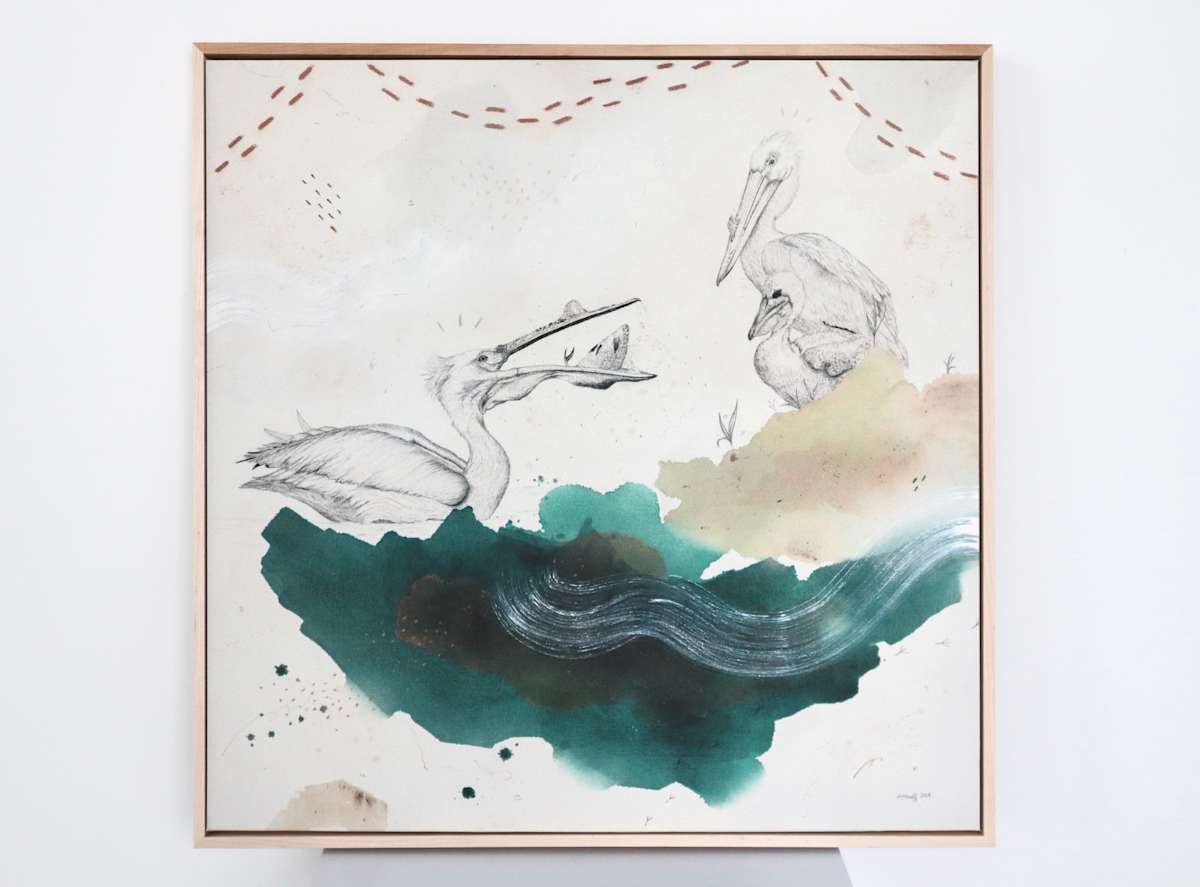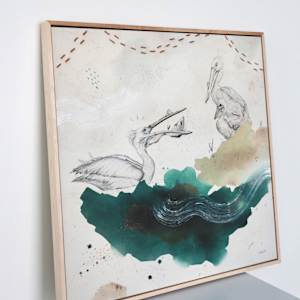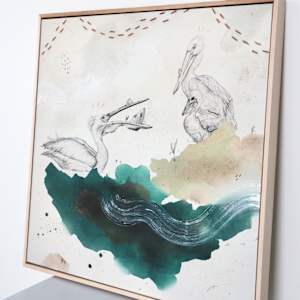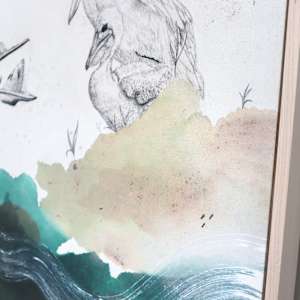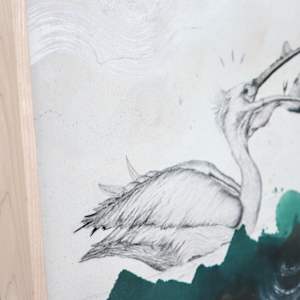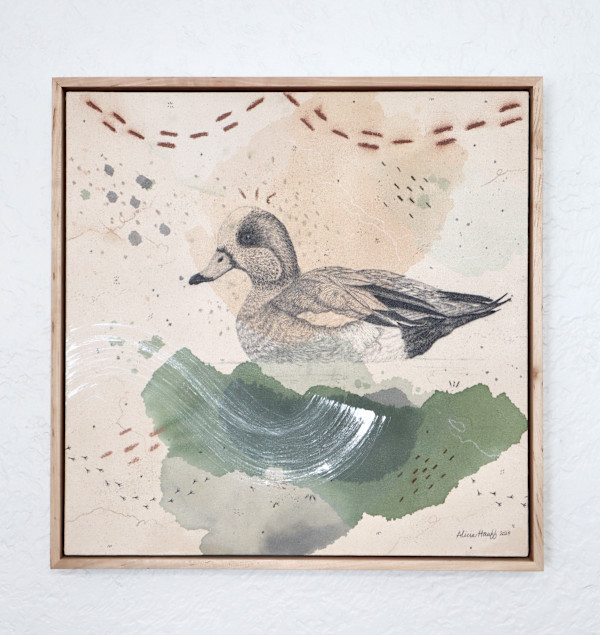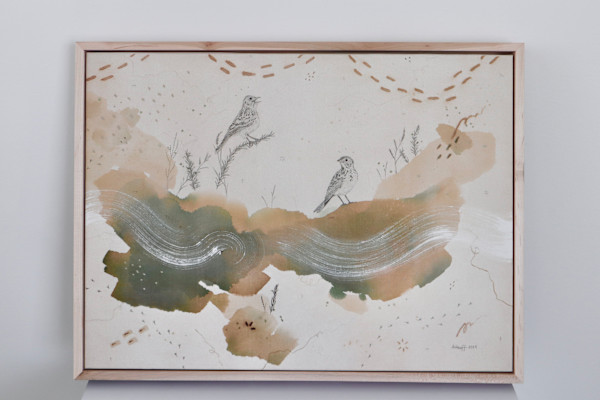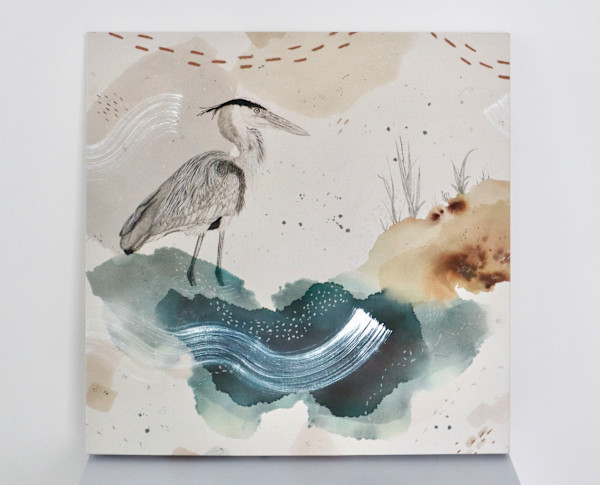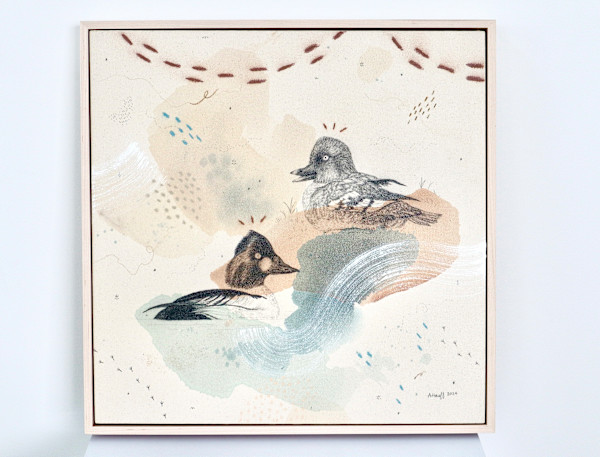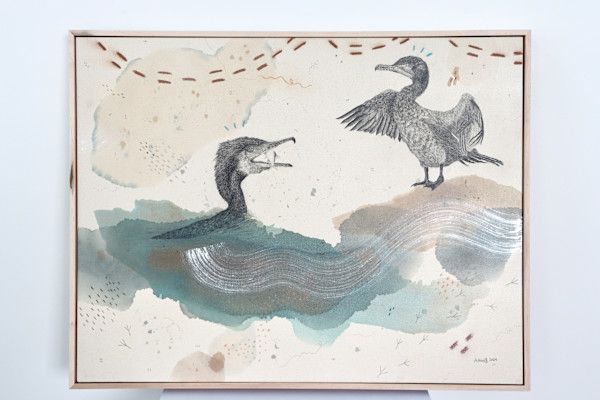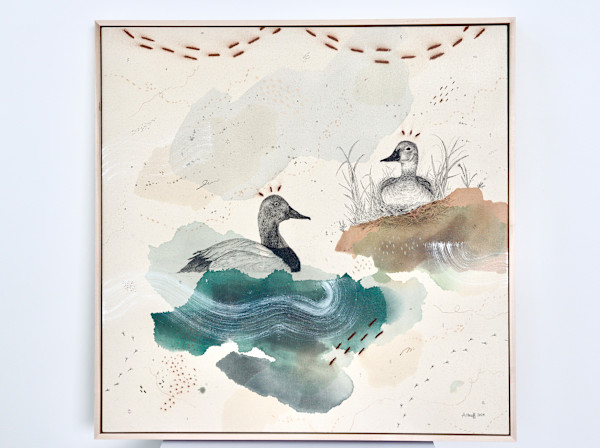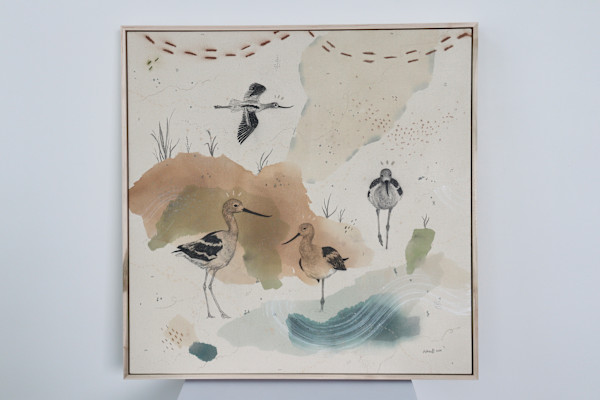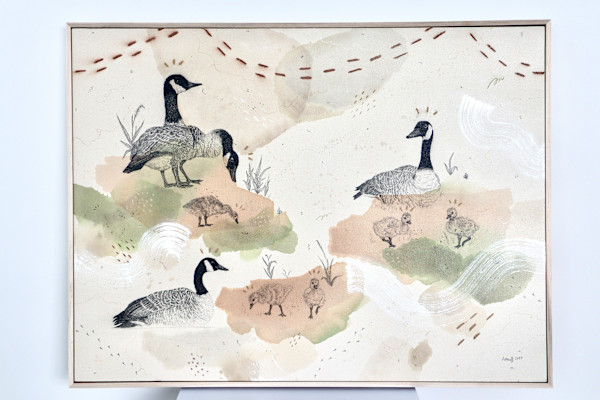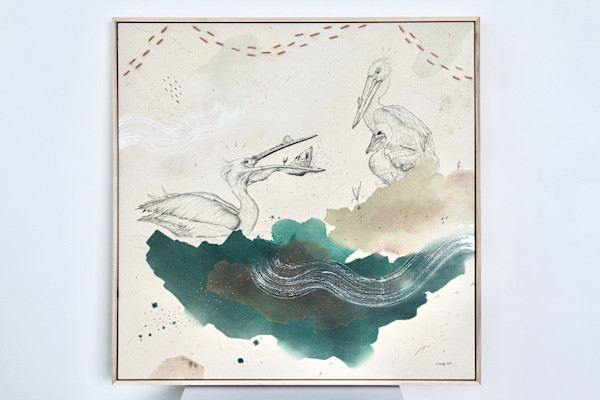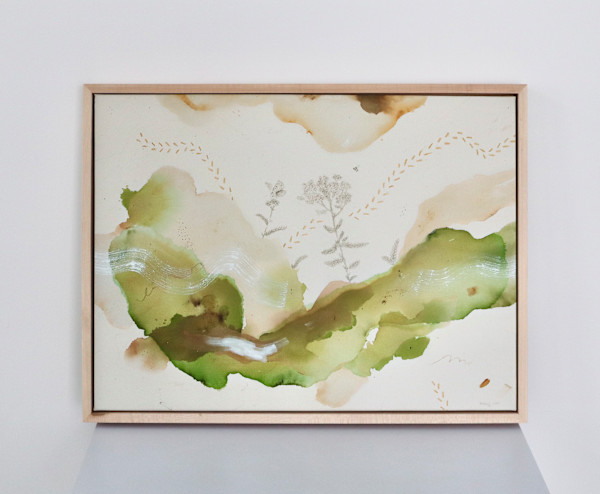he American White Pelican is one of a few prehistoric-looking birds in this series. Pelicans sometimes forage and nest together with Double-Crested Cormorants, probably the most prehistoric-looking of them all. They breed around freshwater lakes or the wetlands of the Northern Great Plains, and winter along coastal bays and inlets. Pairs court in circling flights and in strutting, bowing, and jabbing displays at chosen nest sites. Pelican parents choose a relatively flat nest site on gravel, sand, or soil near other pelicans at the same stage of the breeding cycle. In Southern, drier regions, they nest amongst sparse vegetation. In forested regions, sites may be under shrubs or trees. They use their bills to make a depression about 24 inches wide and 8 inches high with some vegetation.
Though females lay two eggs, one chick may kick the other out, and only one survives. After a few weeks chicks leave the nest and form groups called crèches. Parents continue foraging for them. Pelican chicks take several weeks to go from crawling to running/flapping/swimming and finally to flying. In those several weeks, they require about 150 pounds of food!
One of the largest North American birds, it’s unmistakable with its huge bill, made for scooping up fish. Pelicans often herd together to corral schools of fish for feeding. They forage mainly in the daytime during winter but forage at night during the breeding season—they catch bigger fish at night! The diet consists of fish that are ‘of low commercial value’ and some salamanders or crayfish. Feeding areas are often miles away from nesting sites.
Pelicans continue to rely on shallow wetlands for breeding and foraging, so policy initiatives in this area have helped their numbers rebound. They are of low conservation concern at this time.
This is a matte giclee print made-to-order with archival ink. Available in multiple sizes rolled, stretched, or stretched and frame with seven hardwood options.
- Subject Matter: shorebirds/waterfowl
- Collections: Fine Art Canvas Prints

